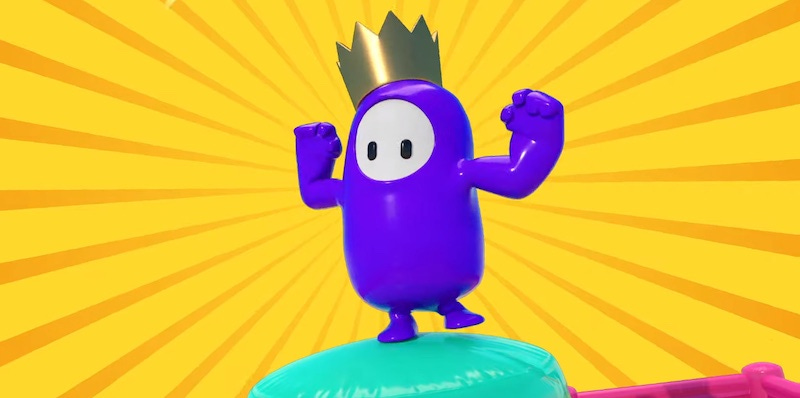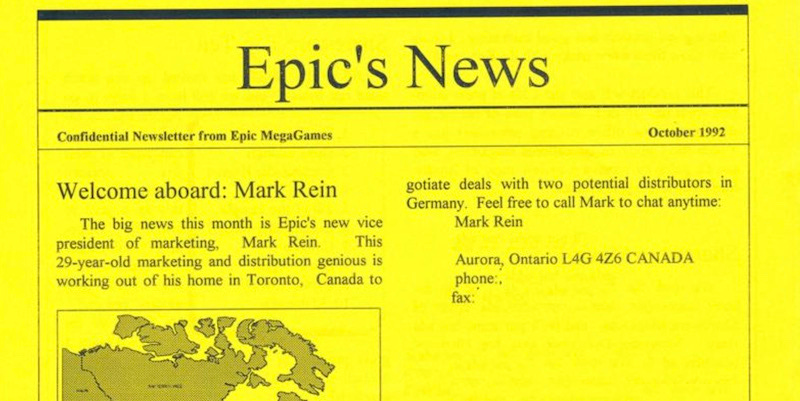The 'GaaS or subscription service' squeeze in games
Publikováno: 17.2.2021
Does it exist, or is it a mirage?
[The GameDiscoverCo game discovery newsletter is written by ‘how people find your game’ expert & GameDiscoverCo founder Simon Carless, and is a regular look at how people discover and buy video games in the 2020s.]
It’s time for our second newsletter of the week. And at first, I really wasn’t sure what I was going to write about. But of course, something always pops up. Thanks to social media, it appeared just at the right time for us to do a ‘hot take’ (let’s say ‘warm take’) about it…
What’s your simple plan as a dev?
The lead item on today’s newsletter is prompted by a comment from NPD’s Mat Piscatella. He re-upped a 2018 Tweet he made about Game Pass which said: “Subscription services like Game Pass are helping sales, not cannibalistic in any way I can see in the data. The future is a mix of sub services and ability to buy outright. Only makes the market grow.” His bump just added the note: ‘Yep. Still true.’
Somewhat funnily, the first reply I see on Mat’s original 2018 Tweet on this is from Matt Matthews. Matt is a math professor in real life, but used to do analysis for my old outlet Gamasutra a few years back. He said: “But does it create a different set of winners and losers? Does it distribute the revenue differently amongst the players (developers, publishers, platform owners)?”
This more logically explains the slightly reflexive trigger response (sorry, Mat, I’m normally not a Twitter ranter!) I had. My particular note back was a dev-centric response to the ‘helping sales’ comment:
“Hmm. How about competitors to lower-budget non-GaaS indie titles of the kind that exist on Game Pass? If you don't get on Game Pass, it's pretty difficult to sell these on Xbox nowadays - I think probably more difficult.
I do think the total pie is going to grow, but certain TYPES of games (particularly the small/medium indies that I like) are going to have issues long-term with Game Pass. If you're not on it and want to make that type of game, it's a problem.”
So I think Mat P’s comment is correct. A mix of purchase and subscription revenue is what we’re going to get, and the overall market is still going to go up. But reflecting on Matt Matthews’ very professorial comment - who are the winners and losers in this scenario?
We are the champions (my friends?)
Most of the largest PC/console game companies (Take-Two, EA, etc) have shifted almost exclusively to a Games As A Service (GaaS) model. You don’t just play GTA V, complete it, and then discard it. You hang out in GTA Online, spend extra money, and become a ‘lifetime value’ customer for Take-Two.
So my statement would be: if you’re a dev making a ‘one and done’ narrative game, with a clear beginning and end, and a decent-sized budget, subscription services are going to be an increasingly important part of your planning if you want to get to breakeven. Maybe not in 2021, but certainly in 2023 or 2025. (Publishers can more successfully hedge using megahits and platform relationships, of course.)
I have myself, in my GameDiscoverCo consulting role, evaluated a game for a publiser in the last few weeks where I said ‘this title would only make financial sense if you can get it on a subscription platform’. If most people aren’t looking at things this way now, they will be eventually.
This is not to demonize subscription services. They’re part or wholly funding some great games, too - Alba from UsTwo for Apple Arcade, for example. And the Game Pass crew have great taste, and are making a lot of super-interesting third-party games available to a wider audience. (Let’s not forget all the high quality independent game studios that Microsoft bought for Game Pass reasons, too.)
But if you’re making a more GaaS-centric title (launch in Steam Early Access with a community centric approach, add features, launch, add patches and maybe even paid DLC, add multiplayer, etc), then you might have more of a chance to grow and retain players over time, particularly on Steam. Even if you don’t monetize them as aggressively as the Take-Twos of this world!
On the other hand, companies like UsTwo (and Spry Fox - I’m super looking forward to Cozy Grove on Apple Arcade!) have been signing projects that only make financial sense on subscription services… with subscription services. (It’s an ideal form of work for hire, really.)
So who are the winners and losers, really?
Look, this isn’t a Spotify music industry-level problem. Game industry revenues are going to keep going up healthily in aggregate. But I think recurring/microtransaction revenue will take up a larger and larger percentage of the pie.
I personally still like the Steam approach to this problem for small and medium-sized companies - the scrupulously egalitarian marketplace of ideas, where you buy an individual game or don’t.
You can maybe quibble with the platform cut, but you can’t look at the top new games on Steam in 2020 and deny that success is open to everyone. (Side note: is there a dilutive PC Game Pass effect on Steam in the long-term, since Microsoft is pushing Game Pass Ultimate hard and that includes PC access?)
I see the potential long term future state of non-F2P games outside of Steam and Switch more as a duality: ‘you have games you MUST buy’ (GaaS-y, regularly updated games, sometimes with microtransactions) and then ‘you have a bunch of other games you play on your subscription’. Some of the MUST buy games will look pretty indie - but many won’t.
Which is where the gotcha comes in. SomaSim’s Robert Zubek (City Of Gangsters) chimed in on our original Twitter thread: “There's another big difference that's affecting smaller devs: subscription platform's inventory cap. In the past, Sony etc didn't care how many games they licensed - it was up to the devs to compete in the marketplace. But Game Pass has an inventory cap IIRC.
So now you're competing not just for players, but also to secure a spot in very limited inventory (e.g. 100 titles per year). I think that's the problem for smaller devs - this is different + much harder than competing for players in an open marketplace, especially for indie games.”
The good news here is that you can still release your games on any platform you like, at any time. Yet subscription services do transfer power and gatekeeping from individual developers to large platforms. And we need to be open-eyed about possible long-term effects for that - while appreciating the extra reach and new players that subscription platforms give us for those who are selected.
The game discovery news round-up..
Well, that was a few words. Let’s finish off the free newsletters for this week by checking out some interesting news that happened in the meantime. (BTW, GameDiscoverCo Plus subscribers will get a cool bonus Friday newsletter with an update on Apple Arcade, Steam, and other game platform trends!) Let’s go:
How did it go for the Emoji Evolution dev I talked about in that recent newsletter about ‘gaming Steam’. Uh, not so well. I did briefly feel bad, but the ‘Very Positive’ developer is having fun with it, chatting to Vice about his new-found fame. (I believe the ban is more for the fake reviews than the developer name. I heard from someone else whose friend got banned recently for ‘my buddies all reviewed my game’ manipulation. But could be a combo ban, heh.)
Enjoyed this MCV look at the state of game journalism, with some smart contributors. As RockPaperShotgun’s Alice Bell notes: “There’s a lot less emphasis on ‘inform’ these days, because companies have a direct line to consumers… we can give more context, I think, and dig out the various oddities and fun things people might not have seen.” Lots more perspective in there too.
We haven’t talked about VGInsights much in this newsletter, but here’s a Gamasutra blog with some Steam game trends in 2020 from them, and here’s their public analytics page for Steam - things like their publisher database are a fun way of rolling up data, go check them out!
Following on from the ‘it’s all about principle for Epic’s Mr. Tim Sweeney’ update last issue, he’s at it again! Epic/The Coalition For App Fairness didn’t get a law about app stores passed in North Dakota, but maybe they’ll try other U.S. states? And Epic just formally complained about Apple & antitrust in the EU. This is going to run and run. (Bonus: these amazing early Epic newsletter archives.)
Cloud tidbits: Microsoft’s xCloud has debuted its web-based cloud game streaming interface for iOS - or at least, somebody debuted it to The Verge, haha; and GeForce Now has a list of officially supported games - and of course it “lets you play games you already own in your various game libraries”, which is nice.
Microlinks: Superjoost on the large-scale game industry & the return of ads; love this interview with documentarian Adam Curtis & Black Mirror’s Charlie Brooker which touches on games; Starbreeze’s recent financial results included the CEO saying the company is “hugely confident [and] thirsting for revenge”, and I’m now slightly obsessed with this phrasing.
[We’re GameDiscoverCo, a new agency based around one simple issue: how do players find, buy and enjoy your premium PC or console game? You can subscribe to GameDiscoverCo Plus to get access to exclusive newsletters, interactive daily rankings of every unreleased Steam game, and lots more besides.]


